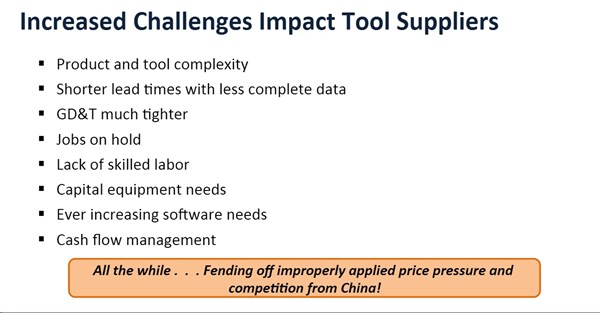What's Behind the Predicted Automotive Industry Slowdown
According to Harbour Results President and CEO Laurie Harbour, “The automotive industry has reached an inflection point and the entire manufacturing value chain will need to change the way it traditionally does business to remain profitable and prepare for a future downturn."

- Although the North American automotive industry demand is predicted to be more than 20 million vehicles in 2015, the industry will experience a plateau going forward to 2022.
- The Detroit 3 automakers have less than 45 percent of North American market share down from 87 percent in 1962.
- Regulatory issues, customer demand, advanced technology and economic factors are putting automaker profits at risk. Factors that are eating away at profitability includeincreased complexity, high mix, low volume variants, increased capital investment, increased tooling costs, product development cost and timing, high launch costs and warranty costs.
- With an unprecedented number of North American vehicle launches scheduled for 2017, 2018, 2019; 40, 49 and 39 respectively, resources will be constrained.
- A shift to low volume vehicles with a high mix of product will result in 80percentof the models being under 100,000 units in annual volumeby 2018.
- Growing complexity and the demand for new and innovative technology coupled with automaker price pressures is puttinga squeeze on Tier 1 supplier profitability.
- The tool and die industry continues to face increased challenges; including, increased tool complexity, shorter lead times, lack of skilled labor, tooling jobs on hold, capital equipment needs and cash flow management.
- As we look to the future there continues to be a capacity gapwithin the tool and die industry.
Related Content
-
Dynamic Tool Corporation – Creating the Team to Move Moldmaking Into the Future
For 40+ years, Dynamic Tool Corp. has offered precision tooling, emphasizing education, mentoring and innovation. The company is committed to excellence, integrity, safety and customer service, as well as inspiring growth and quality in manufacturing.
-
The Role of Social Media in Manufacturing
Charles Daniels CFO of Wepco Plastics shares insights on the role of social media in manufacturing, how to improve the “business” side of a small mold shop and continually developing culture.
-
Think Safety: Eliminate Hazards Throughout the Shop
The tooling community is taking advantage of new products for safer mold shops and molding facilities.












.jpg;maxWidth=300;quality=90)
